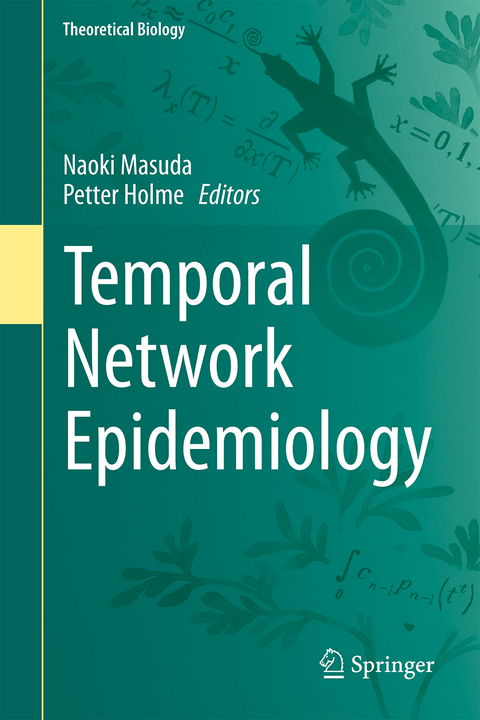
Temporal Network Epidemiology
Springer Verlag, Singapore
978-981-10-5286-6 (ISBN)
More recently, contact networks have been recognized as being highly dynamic. This observation, also supported by an increasing amount of new data, has led to research on temporal networks, a rapidly growing area. Changes in network structure are often informed by epidemic (or other) dynamics, in which case they are referred to as adaptive networks.
This volume gathers contributions by prominent authors working in temporal and adaptive network epidemiology, a field essential to understanding infectious diseases in real society.
Naoki Masuda has been a Senior Lecturer at the University of Bristol’s Department of Engineering Mathematics since 2014. His research interests include both theoretical and data-science aspects of network science, computational neuroscience including neuroinformatics, behavioural ecology, and mathematical biology in general. He received his PhD from the University of Tokyo in 1998. After postdocs in Japan, he worked as a Lecturer and Associate Professor at the University of Tokyo between 2006 and 2014, prior to joining the University of Bristol. Petter Holme is a specially appointed professor at the Institute of Innovative Research, Tokyo Institute of Technology, Japan. His research is both data driven and theoretical and covers many aspects of large-scale structures of natural and social systems. Lately he has also become interested in how to integrate information about time with network methods. Holme has a PhD in theoretical physics from Umeå University, Sweden. After postdocs at the Department of Physics, University of Michigan, and Department of Computer Science, University of New Mexico, he served as an Assistant Professor at the School for Computer Science and Communication, Royal Institute of Technology, Sweden; the Department of Physics, Umeå University, Sweden; and Sungkyunkwan University, Korea before joining Tokyo Institute of Technology.
Introduction.- Temporal subgraph percolation.- Disease spreading in time-evolving networked communities.- Epidemic threshold in temporally switching networks.- Sources of unpredictability in disease spreading on temporal networks.- Epidemics based centrality measure for temporal networks: US hospital network study case.- Epidemics on dynamic networks: non-reactive and reactive link rewiring.- Time-varying activity driven networks to model epidemic spreading: the case of the 2014/15 Ebola outbreak.- Control Strategies of Contagion Processes in Time-varying Networks.ms.- behavioural="" traits="" supporting="" dynamic="" interaction="" with="" multiple="" modes="" spreading.- analysis="" control="" outbreaks="" adaptive="" networks.
| Erscheinungsdatum | 02.11.2017 |
|---|---|
| Reihe/Serie | Theoretical Biology |
| Zusatzinfo | 83 Illustrations, color; 38 Illustrations, black and white; VI, 342 p. 121 illus., 83 illus. in color. |
| Verlagsort | Singapore |
| Sprache | englisch |
| Maße | 155 x 235 mm |
| Themenwelt | Informatik ► Weitere Themen ► Bioinformatik |
| Mathematik / Informatik ► Mathematik ► Angewandte Mathematik | |
| Medizin / Pharmazie ► Medizinische Fachgebiete ► Mikrobiologie / Infektologie / Reisemedizin | |
| Studium ► Querschnittsbereiche ► Epidemiologie / Med. Biometrie | |
| Naturwissenschaften ► Biologie | |
| Schlagworte | adaptive networks • Big Data • Compartmental models • Epidemic processes • infectious disease • Network epidemiology • outbreak • Temporal networks |
| ISBN-10 | 981-10-5286-7 / 9811052867 |
| ISBN-13 | 978-981-10-5286-6 / 9789811052866 |
| Zustand | Neuware |
| Haben Sie eine Frage zum Produkt? |
aus dem Bereich


